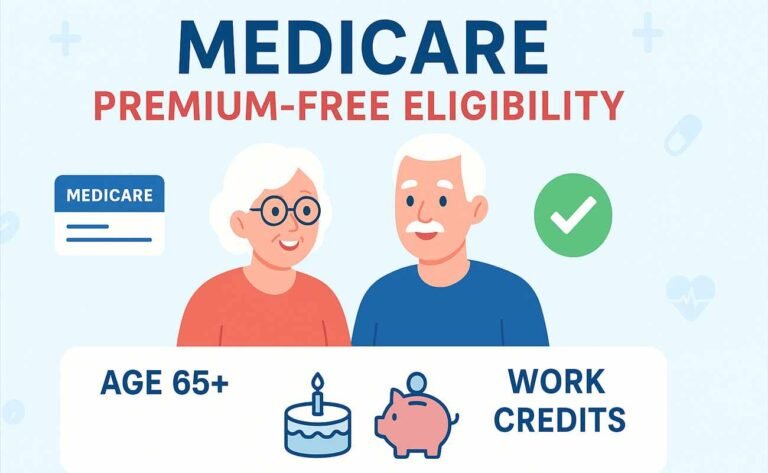ACA Coverage Tiers (Bronze, Silver, Gold, Platinum): Which Plan is Best for Your Budget?
When you’re shopping for health insurance under the Affordable Care Act (ACA), understanding the metal tiers—Bronze, Silver, Gold, and Platinum—helps you pick a plan that fits your wallet and health needs. These categories divide Marketplace plans based on how costs are shared between you and the insurer, with Bronze offering the lowest monthly premiums but highest out-of-pocket expenses, while Platinum provides the opposite. For 2025, open enrollment runs from November 1, 2024, to January 15, 2025, and subsidies can make higher-tier plans more affordable if your income qualifies. Ultimately, the best choice depends on your expected medical usage: healthy individuals might save with Bronze, but those with ongoing care could benefit from Gold or Platinum to cap costs.
That said, Silver plans stand out as the benchmark for premium tax credits and cost-sharing reductions, potentially lowering your share of expenses to as little as 6% if you’re eligible. Factors like deductibles, copays, and out-of-pocket maximums vary by tier, so comparing them ensures you don’t overpay. In this guide, we’ll break down each level, compare them side by side, and help you decide based on budget constraints, using lists and tables for easy reading.
Breaking Down ACA Health Insurance Levels
The ACA, often called Obamacare, sorts plans into metal levels to make comparison straightforward. Each tier reflects the actuarial value (AV), or the percentage of covered medical costs the plan pays on average. For instance, a Bronze plan covers about 60% of expenses, leaving you with 40%. This system applies to all Marketplace options in 2025, and while premiums fluctuate by location and age, the cost-sharing structure stays consistent.
But here’s the thing—don’t just chase the cheapest premium. I recall helping a friend last year who grabbed a Bronze plan to save money upfront, only to face a hefty deductible after an unexpected ER visit. It taught us both to weigh total potential costs. Transitioning to specifics, let’s list out the core features of each tier.
- Bronze Plans: Lowest premiums, but expect high deductibles—often $7,000 or more for individuals. Ideal if you’re healthy and rarely see doctors.
- Silver Plans: Moderate premiums with AV around 70%. They’re key for subsidies, and low-income folks can get enhanced versions that boost coverage to 73-94%.
- Gold Plans: Higher premiums, lower out-of-pocket costs (AV 80%). Great for those anticipating regular care without breaking the bank monthly.
- Platinum Plans: Top-tier with 90% AV, meaning minimal costs when you need services, but premiums can sting if unsubsidized.
These aren’t about plan quality—all must cover 10 essential benefits like preventive care and prescriptions. For more on drug cost caps, check out this guide on 2000 cap on prescription drug costs in Medicare Advantage plans, though it’s geared toward seniors.
ACA Plan Tiers Comparison Table
To visualize differences, here’s a side-by-side table based on 2025 standards. Note: Actual numbers vary by state and insurer; use tools like the KFF Subsidy Calculator for personalized estimates.
| Aspect | Bronze | Silver | Gold | Platinum |
|---|---|---|---|---|
| Actuarial Value (AV) | 60% (plan pays 60%, you pay 40%) | 70% (or 73-94% with CSR) | 80% (plan pays 80%, you pay 20%) | 90% (plan pays 90%, you pay 10%) |
| Average Monthly Premium (Individual, unsubsidized) | $300-$450 | $400-$550 | $500-$650 | $600-$800 |
| Typical Deductible (Individual) | $6,000-$8,000 | $3,000-$5,000 (lower with CSR) | $1,500-$3,000 | $0-$1,500 |
| Out-of-Pocket Maximum (Individual) | $8,000-$9,000 | $6,000-$8,000 (reduced with CSR) | $4,000-$6,000 | $2,000-$4,000 |
| Best For | Low usage, tight budgets | Subsidized enrollees, moderate needs | Frequent care, balanced budget | High needs, willing to pay more upfront |
| Subsidy Eligibility | Yes, but no CSR | Yes, plus CSR if income 100-250% FPL | Yes | Yes |
This table highlights why Silver often wins for value, especially with cost-sharing reductions (CSR) that slash deductibles for qualifying households. Gold might edge out if you expect multiple doctor visits.
Pros and Cons of Bronze Health Coverage
Bronze plans appeal to budget-conscious folks who prioritize low monthly bills. However, they come with trade-offs. Let’s list the upsides and downsides.
Pros of Bronze Plans:
- Affordable Premiums: You pay less each month, freeing up cash for other expenses.
- Tax Credit Friendly: Premium subsidies apply, potentially making them nearly free for low earners.
- Catastrophe Protection: Covers major events after deductible, preventing financial ruin.
- Flexibility for HSAs: Many qualify for Health Savings Accounts, letting you save pre-tax for medical costs.
- Suitable for Young Adults: If you’re under 30 and healthy, this mirrors catastrophic coverage without restrictions.
Cons of Bronze Plans:
- High Deductibles: You might pay thousands before coverage kicks in, tough on unexpected illnesses.
- No Cost-Sharing Reductions: Unlike Silver, no extra savings for low-income groups.
- Limited Preventive Care Value: While free checkups are included, routine care could cost more out-of-pocket.
- Risk for Chronic Conditions: If you have ongoing health issues, bills add up fast.
- Less Predictable Budgeting: Variable costs make planning harder compared to higher tiers.
In short, Bronze suits if you rarely use healthcare. But if subsidies are in play, explore Affordable Care Act ACA subsidies for better options.
Pros and Cons of Silver Health Coverage
Silver strikes a middle ground, making it popular. It’s the only tier with CSR, which can transform it into “Silver-plus” for eligible people.
Pros of Silver Plans:
- Balanced Costs: Moderate premiums with reasonable deductibles, especially post-subsidy.
- Cost-Sharing Reductions: If your income is 100-250% of the federal poverty level (FPL)—about $15,060-$37,650 for one person in 2025—deductibles drop dramatically.
- Benchmark for Subsidies: Premium tax credits are calculated against Silver, often making them the most affordable overall.
- Good for Moderate Usage: Covers more if you see doctors a few times a year.
- Enhanced Options: Some states offer “Silver loading,” where subsidies spill over to make Gold cheaper.
Cons of Silver Plans:
- Higher Premiums Than Bronze: Without subsidies, monthly costs bite more.
- Variable AV Without CSR: Sticks at 70% if you don’t qualify for extras.
- Not Ideal for High Needs: If you anticipate lots of care, Gold might save more long-term.
- Enrollment Requirement for CSR: You must pick Silver to access reductions—no flexibility.
- State Variations: Availability and exact benefits differ by location.
Many folks I know stick with Silver because of those CSR perks. It feels like getting Gold-level coverage at Bronze prices sometimes.
Pros and Cons of Gold Health Coverage
Gold plans ramp up protection, appealing to those who value predictability.
Pros of Gold Plans:
- Lower Out-of-Pocket Costs: With 80% AV, copays and coinsurance are smaller.
- Quicker Coverage Activation: Lower deductibles mean benefits start sooner.
- Ideal for Families: Covers more for kids’ checkups or minor injuries without huge bills.
- Subsidy Boost: Enhanced subsidies in 2025 can make premiums competitive with Silver.
- Chronic Care Friendly: Better for managing conditions like diabetes, as costs stay manageable.
Cons of Gold Plans:
- Elevated Premiums: Higher monthly payments strain tight budgets.
- No CSR Access: Miss out on Silver’s extra reductions.
- Overkill for Healthy People: You might pay for unused coverage.
- Fewer Plan Options: Not all insurers offer Gold in every area.
- Tax Implications: Premiums could push you into higher brackets without careful planning.
If you’re like me and prefer peace of mind, Gold often hits the sweet spot—especially with tools from Healthcare.gov to compare.
Pros and Cons of Platinum Health Coverage
Platinum is the premium choice, minimizing surprises at the doctor’s office.
Pros of Platinum Plans:
- Minimal Cost-Sharing: 90% AV means you pay just 10% on average.
- Low or No Deductibles: Some have $0 deductibles, ideal for high utilizers.
- Comprehensive Protection: Covers extensive services with low copays.
- Subsidy Compatibility: Tax credits can offset high premiums.
- Best for High-Income Earners: If unsubsidized, the trade-off favors those who can afford it.
Cons of Platinum Plans:
- Steep Premiums: Often double Bronze rates, tough without aid.
- Limited Availability: Fewer options in many states for 2025.
- Potential Waste: Overpays if you don’t use much healthcare.
- No Extra Reductions: Like Gold, skips CSR benefits.
- Higher Overall Spend: Premiums might exceed savings for average users.
Platinum shines for those with serious health concerns, but most budgets lean lower.
Key Factors to Consider in Selecting Marketplace Coverage Options
Choosing isn’t just about tiers—several elements influence the fit. Here’s a detailed list to guide you.
- Income Level: Check FPL; under 400% qualifies for subsidies (e.g., $60,240 for one in 2025). Silver maximizes value here.
- Expected Healthcare Usage: Count doctor visits, meds, and procedures. Low? Bronze. High? Gold or Platinum.
- Family Size: Larger households get bigger subsidies; consider kid-friendly networks.
- Location: Plans vary by state—urban areas have more choices.
- Provider Networks: Ensure your doctors are in-network to avoid extra costs.
- Prescription Needs: Review formularies; higher tiers often cover more drugs affordably.
- Out-of-Pocket Maximum: All plans cap this at $9,450 individual/$18,900 family in 2025—factor in.
- HSAs and Tax Benefits: Bronze/Gold often pair with HSAs for savings.
- Chronic Conditions: Opt for tiers with pre-deductible coverage for management programs.
- Enrollment Timing: Miss open enrollment? Special periods apply for life changes.
Weighing these prevents regrets. For example, a colleague switched to Gold after underestimating allergy treatments.
Budget-Specific Recommendations for ACA Tiers
Your finances dictate the ideal pick. Let’s break it down by budget type with lists.
For Tight Budgets (Low Income, High Subsidy Eligible):
- Prioritize Silver for CSR—could reduce deductibles to under $500.
- Use subsidies to explore Gold if usage is moderate.
- Avoid Platinum; premiums eat aid.
- Example: If earning $25,000, Silver might cost $50/month post-credit.
For Moderate Budgets (Middle Income, Some Subsidy):
- Balance with Gold for lower long-term costs.
- Silver as fallback if CSR applies (up to 250% FPL).
- Bronze if healthy, but calculate total spend.
- Tip: Aim for plans where premium is 5-8% of income.
For Flexible Budgets (Higher Income, No Subsidy):
- Gold or Platinum for predictability.
- Skip Bronze unless ultra-healthy.
- Factor HSAs for tax perks.
- Real talk: Without subsidies, Platinum saves if you hit $10,000+ in care annually.
Common Mistakes to Avoid When Picking Health Insurance Tiers
People trip up often—here’s a list of pitfalls.
- Focusing Only on Premiums: Ignore deductibles, and you pay later.
- Overlooking Subsidies: Always apply; they transform affordability.
- Ignoring Network Size: Out-of-network bills skyrocket.
- Forgetting Essential Benefits: Confirm coverage for maternity, mental health, etc.
- Not Comparing Annually: Plans change; review during open enrollment.
- Skipping Tools: Use estimators to simulate costs.
- Assuming All Tiers Equal Quality: Star ratings matter more.
- Delaying Enrollment: Coverage gaps cost dearly.
- Misjudging Usage: Track past bills for accurate forecasts.
- Neglecting Appeals: If denied, fight for better options.
Avoiding these keeps you covered smartly.
Exploring Health Plan Categories in Depth
Beyond basics, consider LSI terms like “Obamacare metal levels” or “Marketplace insurance categories.” For instance, catastrophic plans (under 30s) act like super-Bronze but aren’t tiers.
In 2025, with inflation adjustments, FPL thresholds rose, expanding eligibility. If you’re a senior blending ACA with Medicare, note overlaps—but ACA is for under-65 primarily.
Final Thoughts on Optimizing Your ACA Choice
Picking the right tier boils down to balancing premiums against potential bills. Start with your budget, estimate usage, and apply subsidies. Tools and comparisons make it doable. Remember, the goal is protection without poverty.






